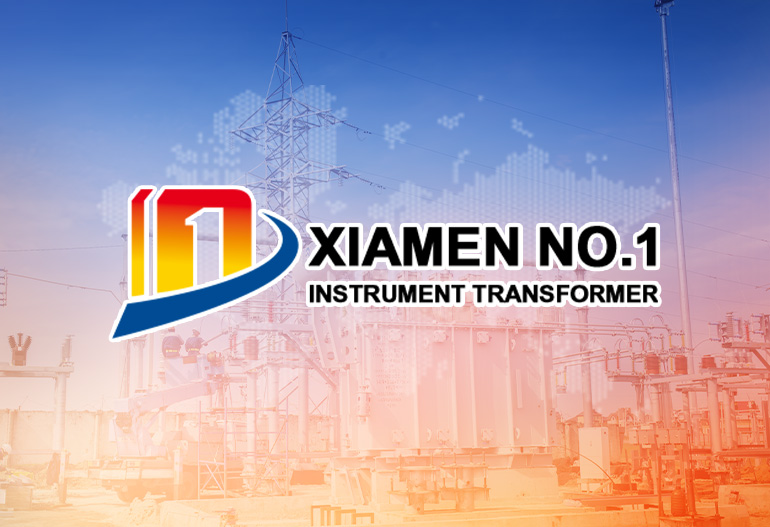
News
Split Core Current Transformers for Easy Installation
1. What are Split Core Current Transformers?
2. Design and Working Principle
2.1 Core Structure
Hinged or Split Design:
The core is divided into two halves (e.g., a "clam-shell" design) that can be opened and closed around the conductor.
Secured with a latch or bolt for a tight magnetic seal, minimizing air gaps and magnetic leakage.
Material:
Typically made of ferrite or silicon steel for high permeability and low losses at power frequencies (50/60 Hz).
2.2 Operation
Electromagnetic Induction:
When clamped around a live conductor, the split core CT functions like a traditional CT: the primary current in the conductor induces a proportional secondary current in the CT’s winding.
Current Ratio:
Standard ratios include 100A/5A, 200A/1A, or custom ratios for specific applications.
Secondary Connection:
Wires or terminals connect to meters, relays, or data loggers for current measurement.
3. Key Advantages
| Advantage | Impact |
|---|---|
| Tool-Free Installation | No need to shut down the circuit or dismantle equipment (critical for live-line work). |
| Retrofitting Compatibility | Easily added to existing systems without redesigning the layout. |
| Portability | Lightweight and compact, suitable for temporary or mobile measurements (e.g., field diagnostics). |
| Cost-Effective | Reduces labor costs and downtime compared to traditional CTs. |
| Non-Invasive | No physical modification to the conductor, preserving system integrity. |
4. Applications
4.1 Industrial Maintenance
Motor Load Monitoring: Clamp onto motor feeder cables to check for overloads or phase imbalances without disrupting production.
Temporary Energy Audits: Deployed by engineers to measure current in industrial systems during short-term assessments.
4.2 Commercial and Residential Grids
Smart Meter Retrofitting: Installed on distribution panels to enable real-time energy monitoring in buildings without rewiring.
PV System Integration: Used in rooftop solar systems to measure inverter output current without dismantling conduit.
4.3 Renewable Energy
Wind Turbines: Clamped around nacelle cables for temporary performance testing.
Battery Storage Systems: Monitor charge/discharge currents in energy storage arrays.
4.4 Utilities and Field Services
Fault Detection: Rapid deployment by utility crews to identify overcurrent issues in distribution lines.
Substation Testing: Used during commissioning to verify relay settings without interrupting grid supply.
5. Types of Split Core CTs
5.1 Based on Core Material
Ferrite Core:
Ideal for high-frequency applications (e.g., variable frequency drives, UPS systems).
Compact and lightweight but limited to lower current ratings (up to 200A).
Silicon Steel Core:
Suitable for low-frequency (50/60 Hz) high-current applications (up to 2000A).
Offers better accuracy for metering and protection.
5.2 Based on Output Type
Analog Output:
Provides a proportional AC current (e.g., 5A or 1A) or voltage (e.g., 100mV) for traditional meters.
Digital Output:
Converts current to a digital signal (e.g., Modbus RTU) for direct integration with IoT platforms or SCADA systems.
5.3 Based on Size and Rating
Miniature Split Core CTs:
For small conductors (e.g., 10A–100A) in residential or low-power applications.
Heavy-Duty Split Core CTs:
Designed for large cables or busbars in industrial settings (e.g., 500A–2000A).
6. Installation Best Practices
Ensure a Tight Seal:
Close the core fully and secure the latch/bolt to minimize air gaps, which can cause measurement errors or noise.
Conductor Placement:
Position the conductor at the center of the core to avoid 偏心 (eccentricity) and magnetic field distortion.
Grounding:
Connect the CT’s secondary circuit to a dedicated ground to prevent voltage buildup and EMI interference.
Burden Management:
Ensure the secondary load (e.g., meter, data logger) does not exceed the CT’s rated burden (e.g., 5VA for a 5A CT).
7. Limitations and Mitigation
Lower Accuracy:
Split cores have a small air gap when closed, leading to slightly higher errors compared to solid-core CTs (typically Class 1 or 0.5 vs. Class 0.2 for solid cores).
Mitigation: Choose high-quality CTs with precision-machined core interfaces.
Current Rating Limits:
Split cores may have lower current ratings than solid-core CTs (e.g., max 2000A vs. 5000A for toroidal designs).
Mitigation: Use multiple split core CTs in parallel for extremely high currents.
Frequency Limitations:
Ferrite cores are suitable for up to 1kHz, while silicon steel is limited to 50/60 Hz.
Mitigation: Use Rogowski coils (flexible split-core sensors) for high-frequency applications.
8. Standards and Compliance
IEC 60044-1: General requirements for instrument transformers.
ANSI C57.13: U.S. standards for CT performance and testing.
UL 94: Flammability standards for enclosure materials (e.g., V-0 rated plastic).
9. Case Study: Split Core CTs in a Food Processing Plant
Challenge: A food plant needed to monitor energy usage in existing conveyor motors without shutting down production.
Solution: Installed 200A/5A split core CTs on motor feeder cables during a scheduled maintenance window.
Outcome: Real-time load data identified underutilized motors, leading to a 15% reduction in energy costs via VFD upgrades.
10. Future Trends
Digital Integration: Split core CTs with built-in IoT modules for wireless data transmission (e.g., Bluetooth, 4G).
High-Temperature Designs: Materials like nanocrystalline cores for use in harsh environments (e.g., steel mills, kilns).
Automated Installation Tools: Smart clamps with torque sensors to ensure consistent core closure.
Conclusion

XUJIA
I graduated from the University of Electronic Science and Technology, majoring in electric power engineering, proficient in high-voltage and low-voltage power transmission and transformation, smart grid and new energy grid-connected technology applications. With twenty years of experience in the electric power industry, I have rich experience in electric power design and construction inspection, and welcome technical discussions.

